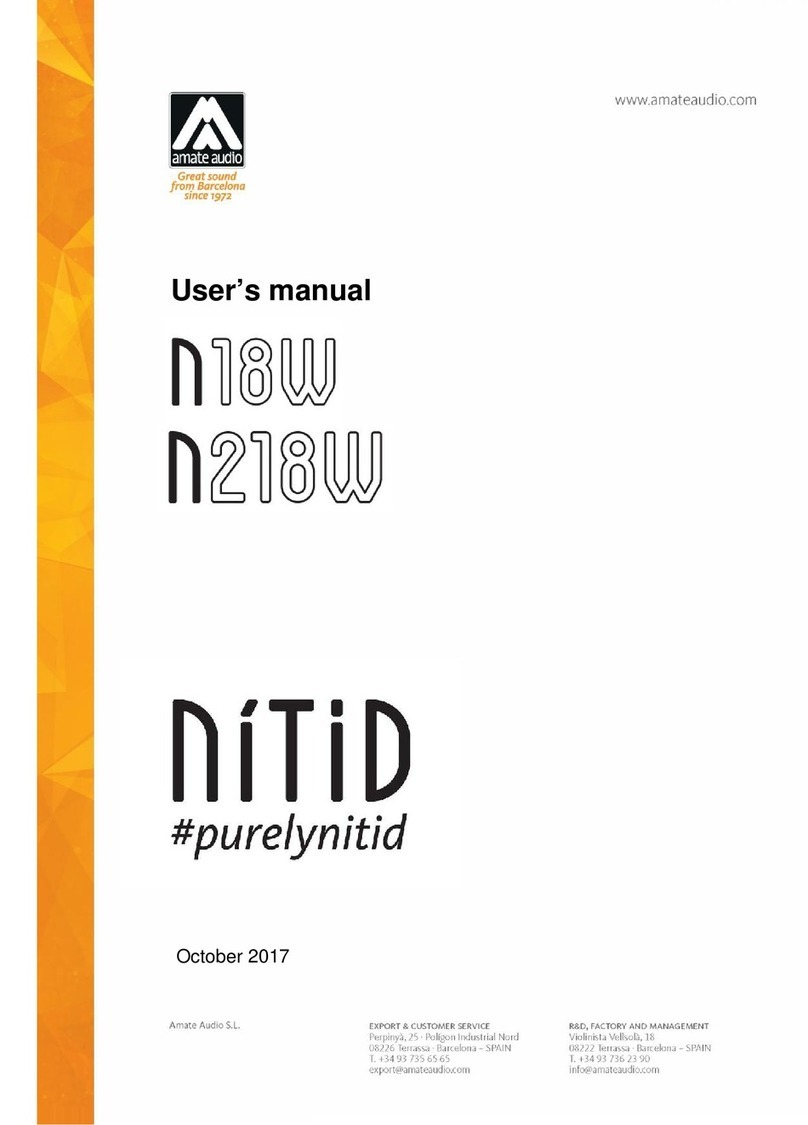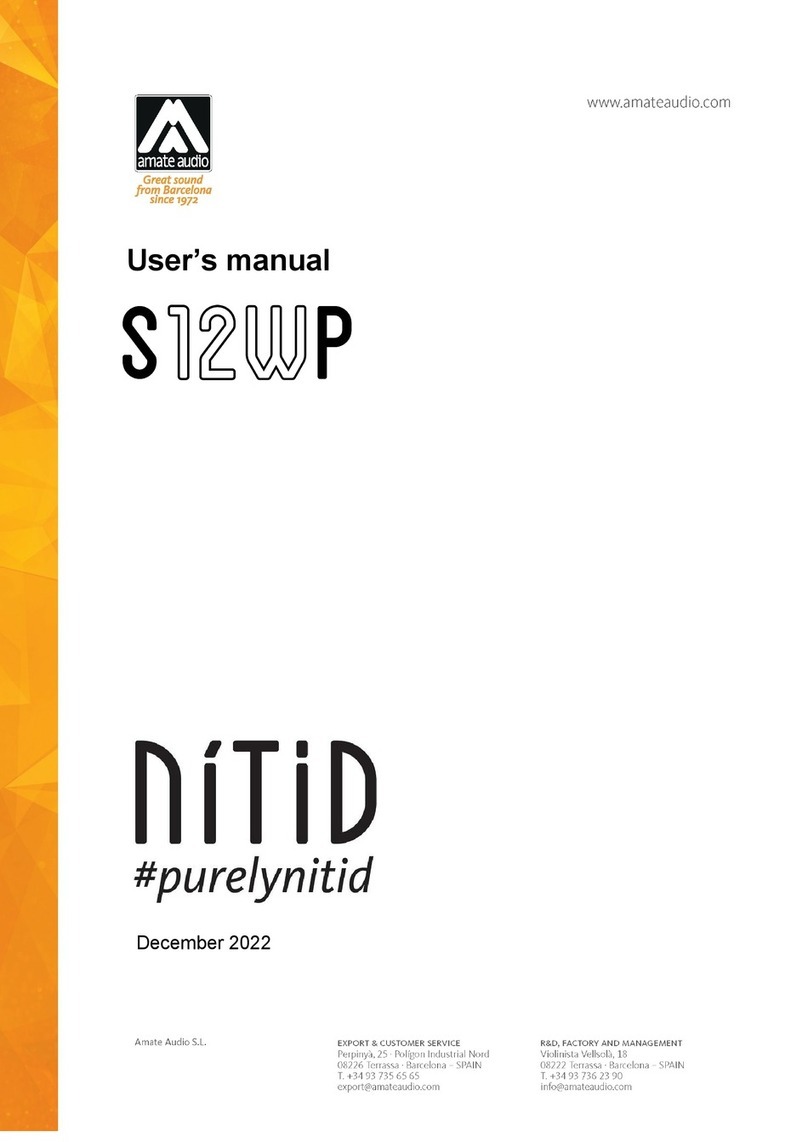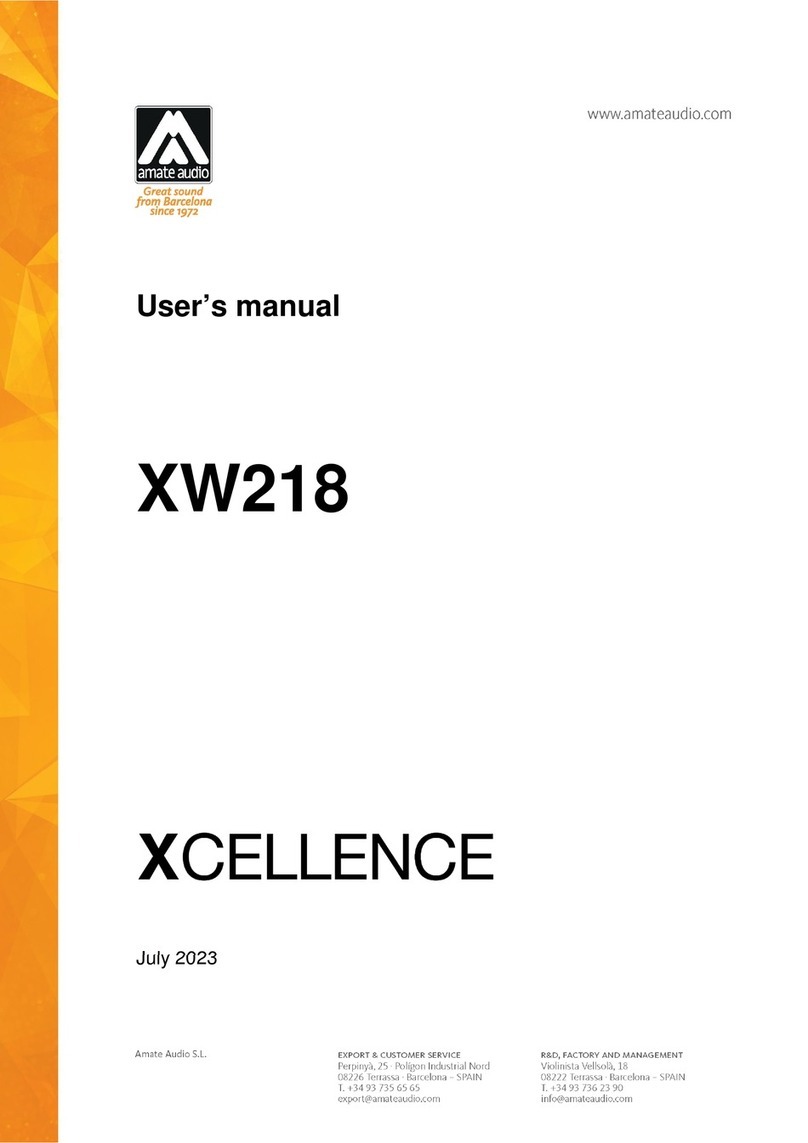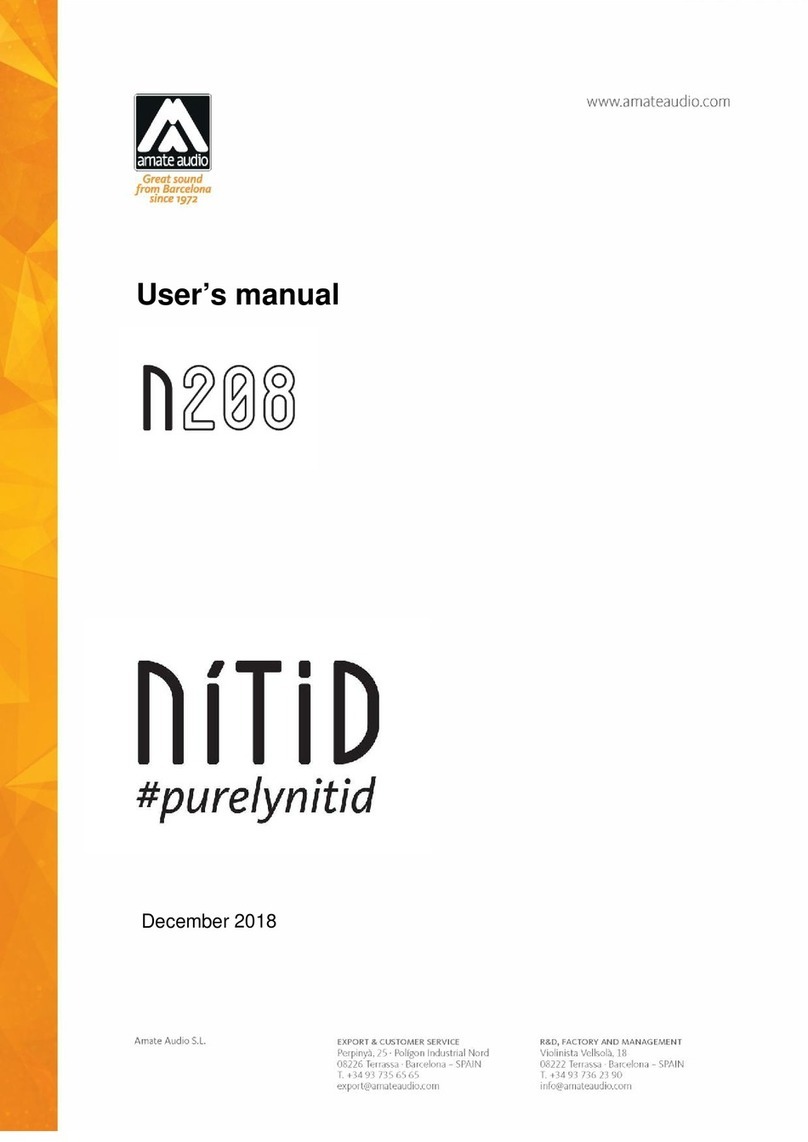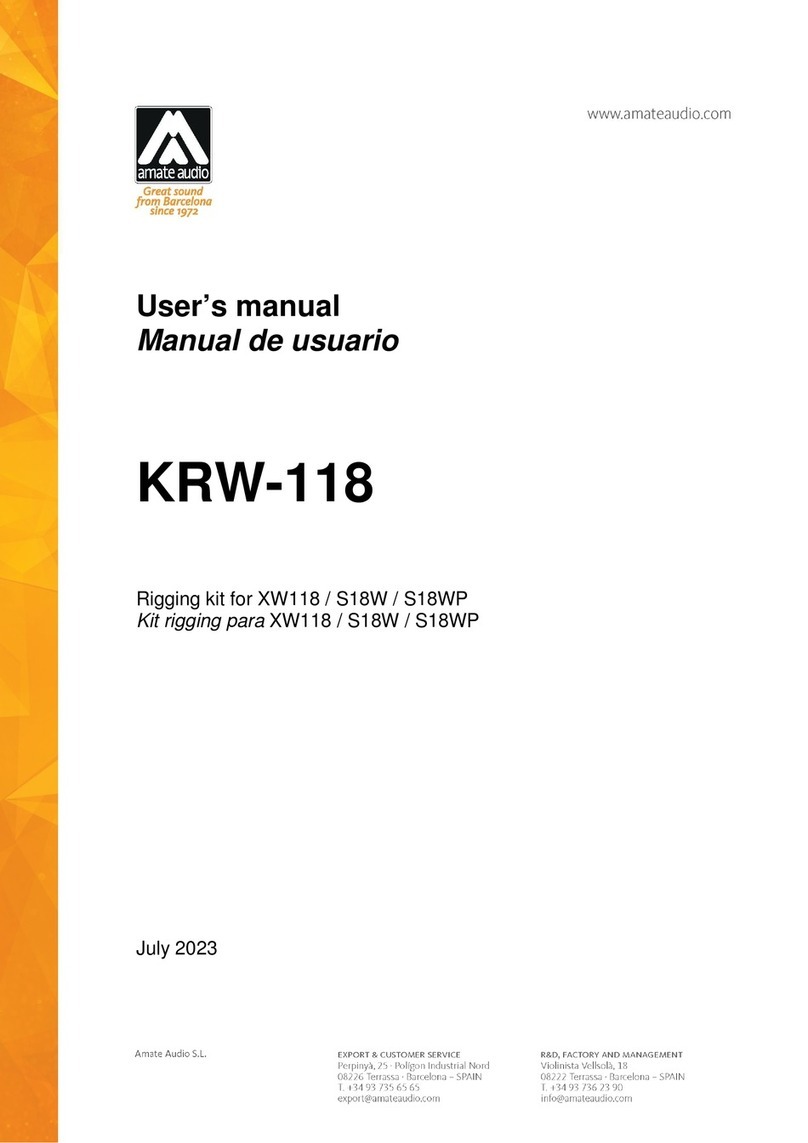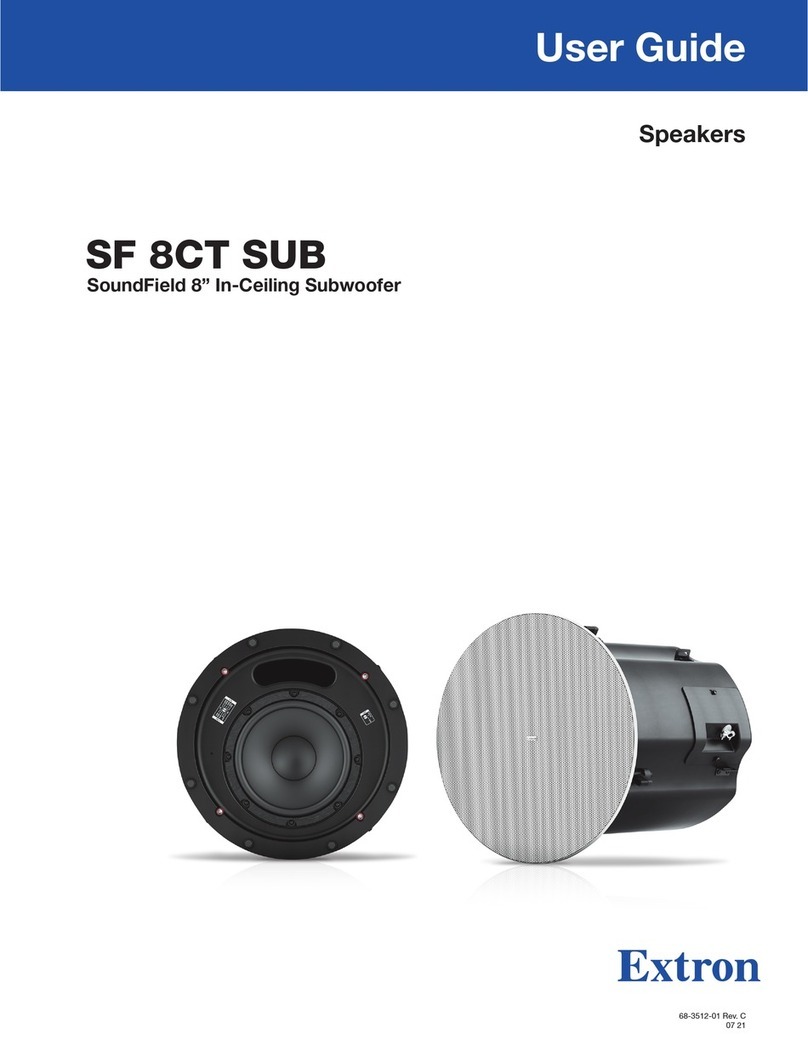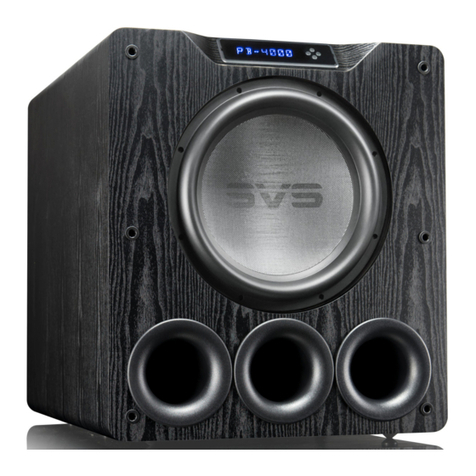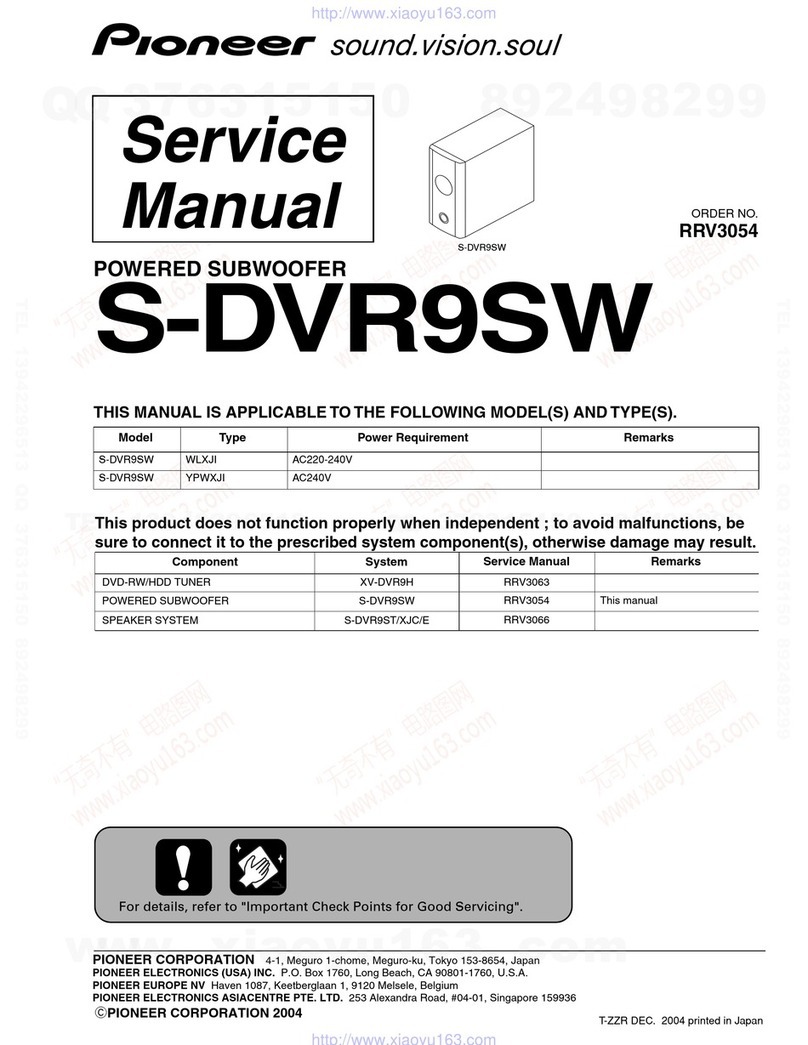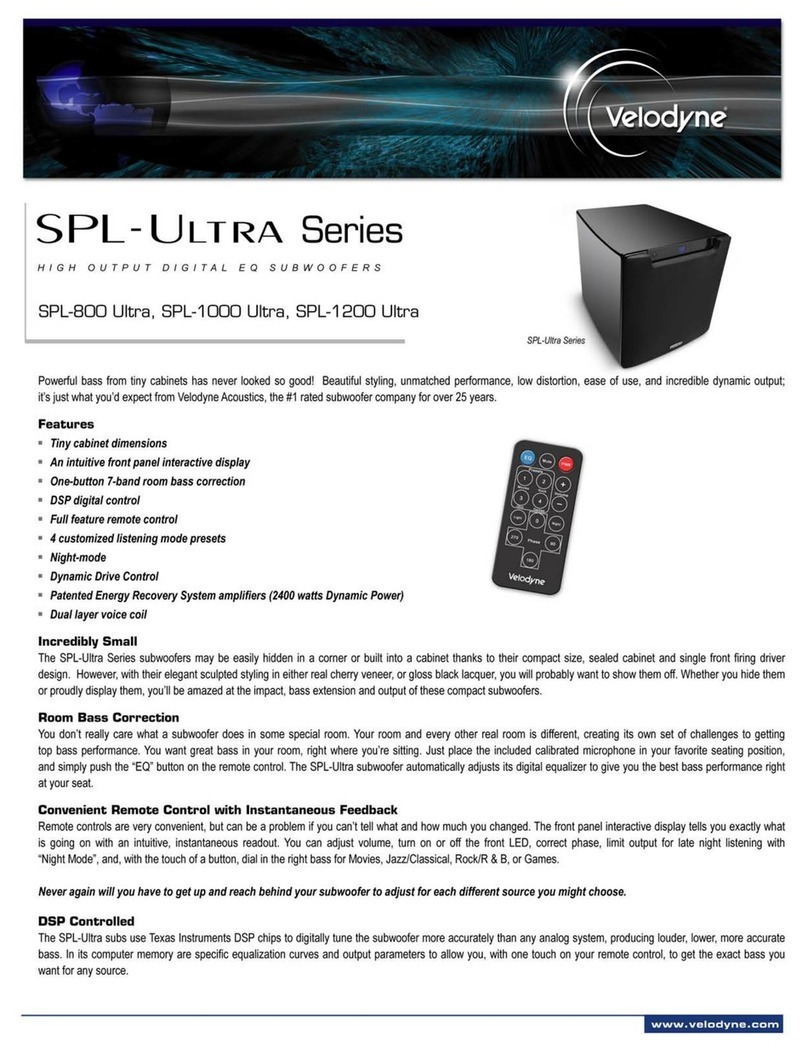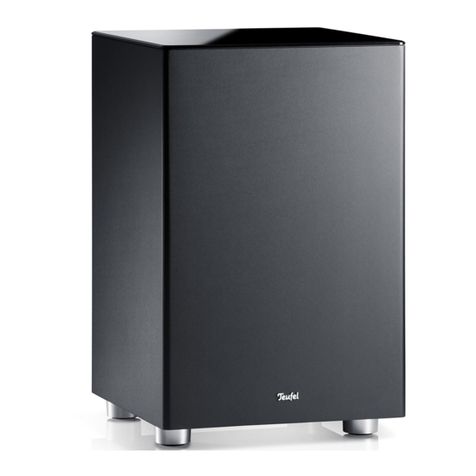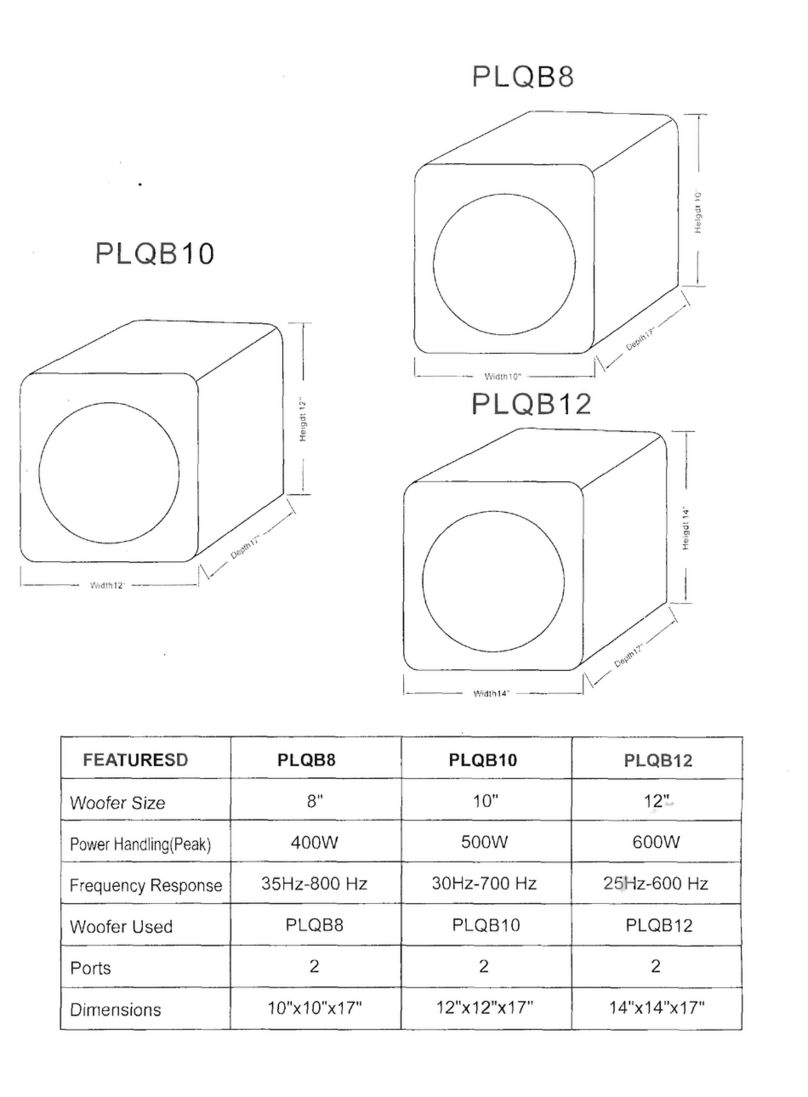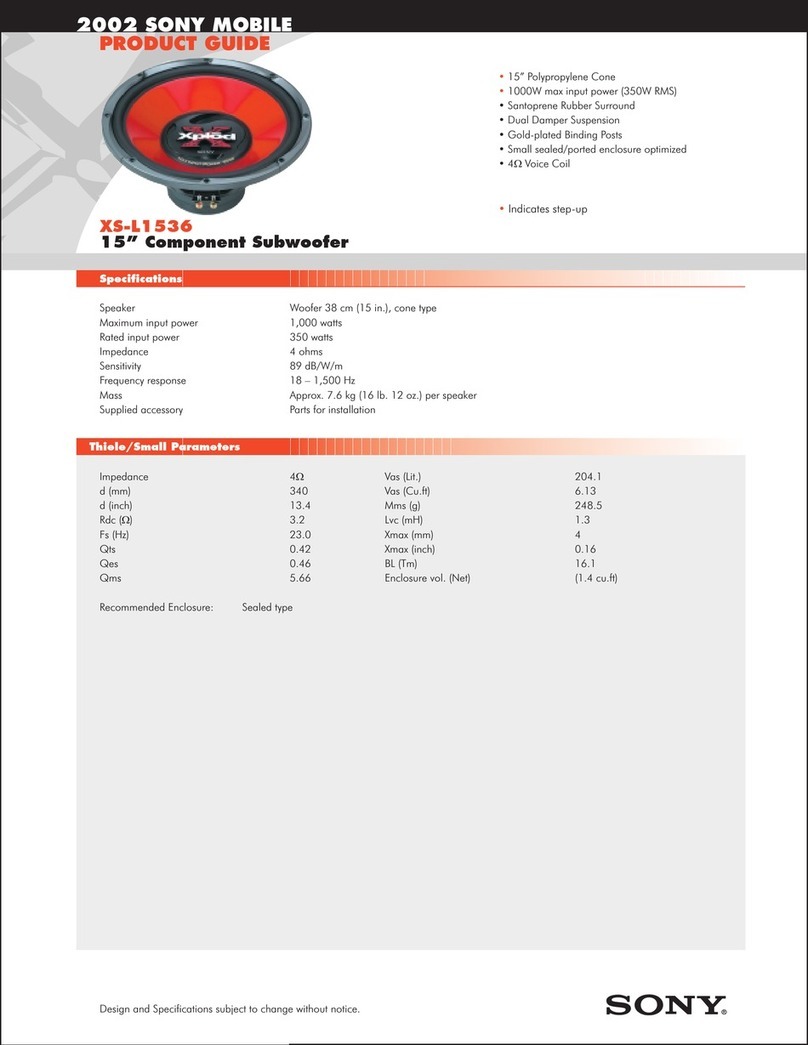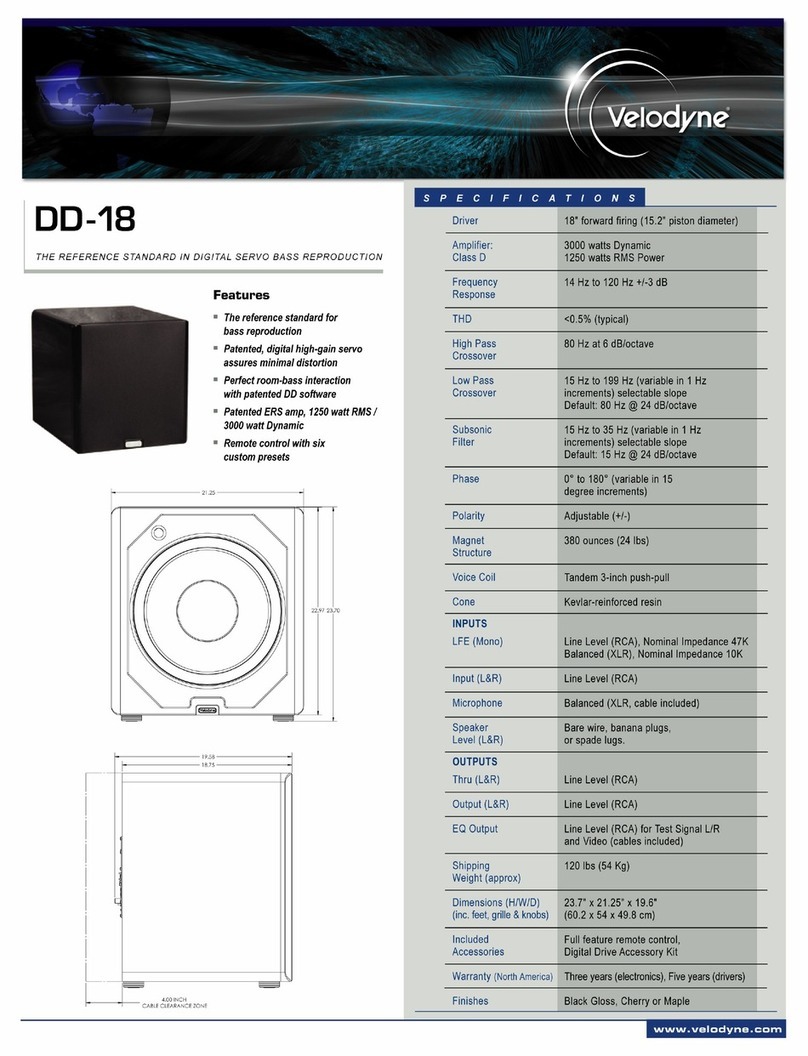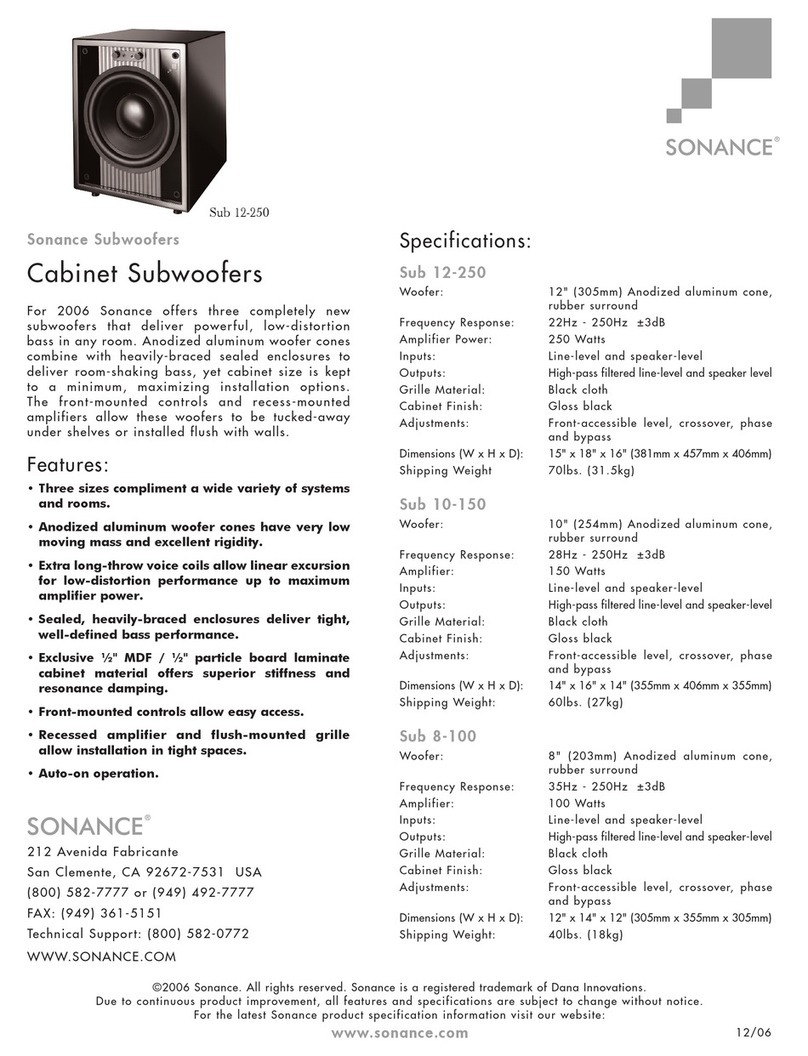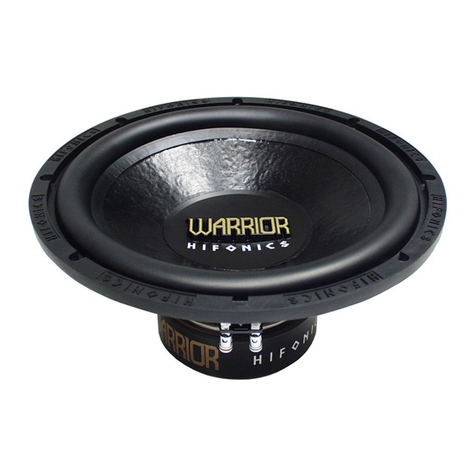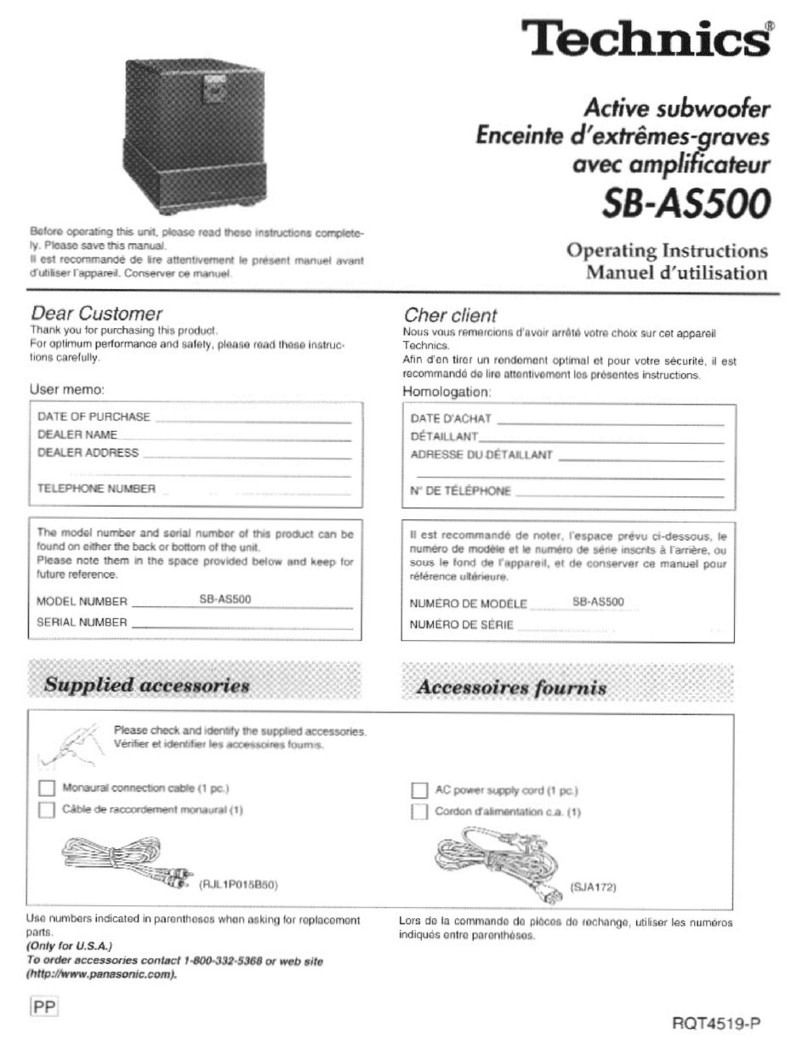X212AF_X218WF Apr 2019
7Amate Audio
Fig.7.Cylindrical wave (A) vs
Spherical wave (B)
(A): -3 dB / doubling of distance
(B): -6 dB / doubling of distance
1.4. Features and presentation
X212AF
- Self-powered three-way acoustic
system
- XLR electronically balanced input
& XLR parallel link
- AC PowerCon input & link
- EtherCon RJ45 input & link
- 2000W class D amplifier for bass
range
- 1000W class D amplifier for mid-range
- 1000W class D amplifier for high range
- 24-bit AD/DA converters with 112 dB dynamic range, 48 kHz sampling rate
- DSP Controls (presets, parametric EQs, delay, mute, volume and limiter)
- Amplifier self-diagnostics: input level, temperature, limiter active
- Overvoltage protection (>250V-400V)
-Ethernet connectivity
- 2 x 12” neodymium woofers with 3” voice coil
- 4 x 6” neodymium woofers with 1.5” voice coil coupled to 2 x mid phase plugs
- 2 x 3” titanium diaphragm neodymium drivers coupled to 1 x HF waveguide
- 100 x 8º dispersion
X218WF
- Self-powered subwoofer
- XLR electronically balanced input & XLR parallel link
- AC PowerCon input & link
- EtherCon RJ45 input & link
- 5000W amplifier
- 24-bit AD/DA converters with 112 dB dynamic range, 48 kHz sampling rate
- DSP Controls (presets, parametric EQs, delay, mute, volume and limiter)
- Amplifier self-diagnostics: input level, temperature, limiter active
- Overvoltage protection (>250V-400V)
- Ethernet connectivity.
- 2 x 18” long-excursion neodymium woofers with 4” voice coil and demodulation
rings to reduce distortion and the transitory response
2. X212AF FEATURES
The X212AF cabinet is ideal for a multitude of applications. It includes 2000W
amplification for the low range woofers, 1000W for the mid-range woofers, 1000W
for the high range compression drivers and digital signal control by DSP. The
